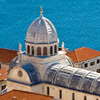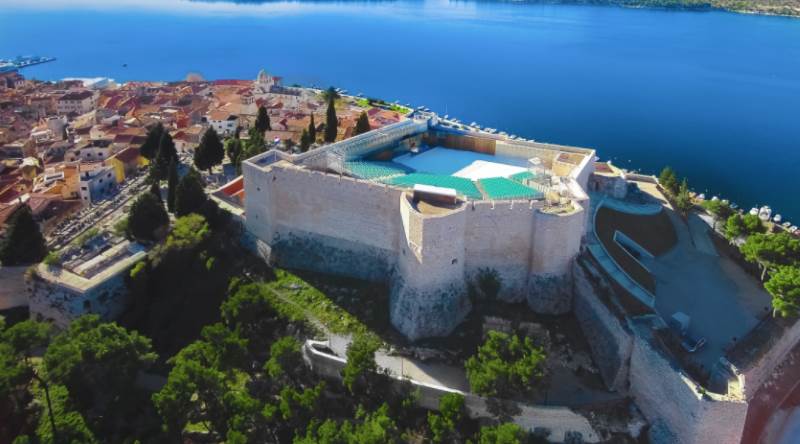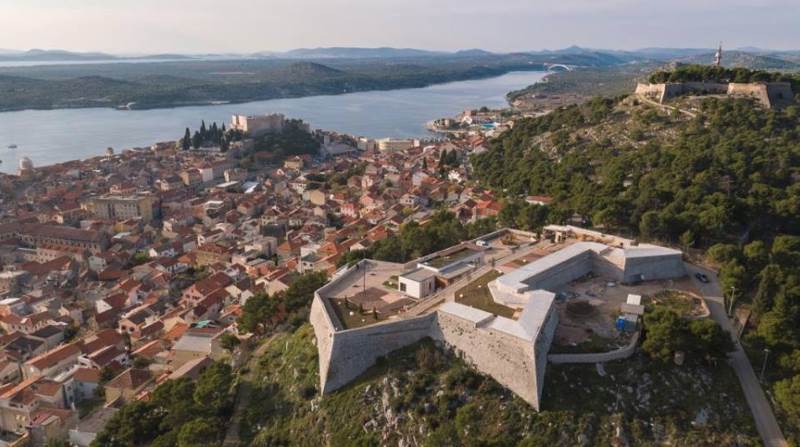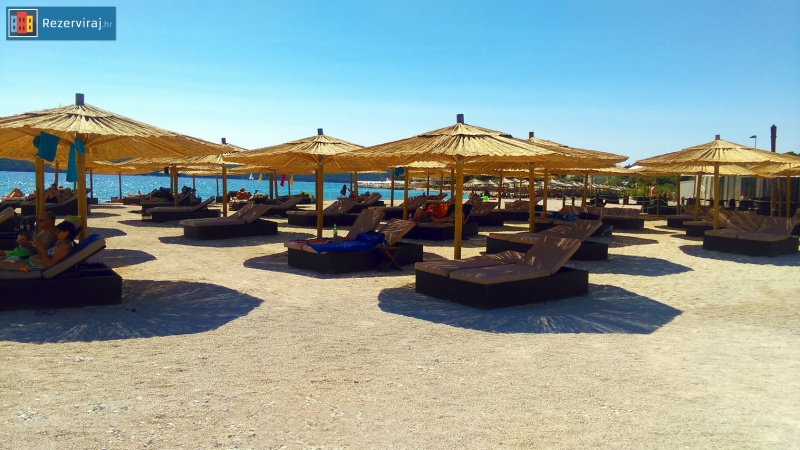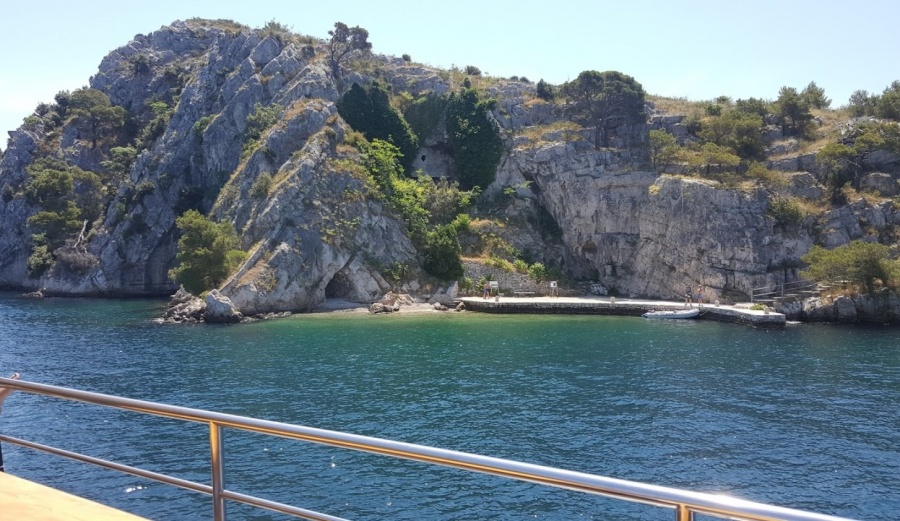Sibenik is the oldest Croatian self-proclaimed town on the Adriatic. It is the main cultural, educational, administrative and economic center of the Šibenik-Knin County. There is enough reason to visit Sibenik, but it is not even close to what this town offers.
We provide you with a list of the most famous sights and sites you need to visit if you are in Sibenik or in the surrounding places as well as the region of North Dalmatia and suggestions of what to do in Sibenik.
For the first time, Sibenik was mentioned in 1066 in the gift of Petra Krešimira IV. That is why it is often called the Krešimirov town. It is interesting to note that Sibenik, the epidemic of the plague in the mid-17th century, was the largest city on the entire eastern Adriatic coast. It was the de facto capital of Croatia from December 1944 to May 1945.
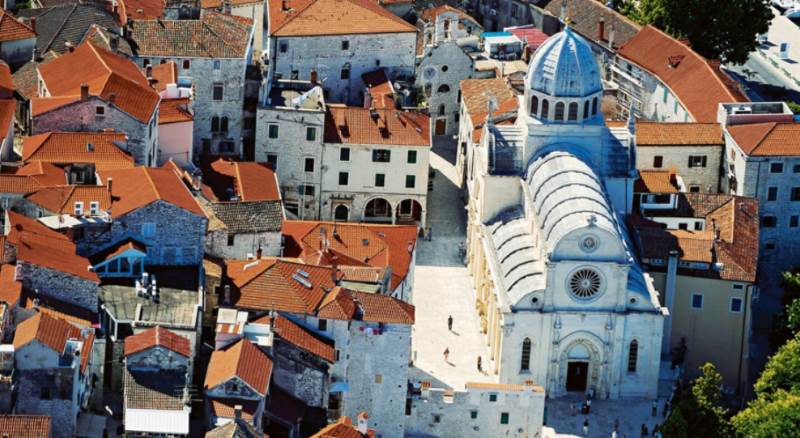
Sibenik Cathedral - This building is interesting and striking, both in Croatia and in the world. Many dive into this facility, looking at it with the eyes of experts or a visitor who loves history and old building. The Cathedral in Sibenik is certainly the most important architectural achievement from the 15th to the 16th century on the Croatian soil. It is special for many things, and today it is a symbol of this city. The cathedral was completed in 1536, and in 1555 it was bishop Ivan Lucija Štafilić. After a thorough reconstruction in the 19th century the cathedral was re-dedicated in 1860.
Due to its exceptional values, the Cathedral of Sibenik was listed on UNESCO World Heritage List in 2000. The Cathedral was built on the south side of the central old town square, on the site of the Romanesque church of St. James. Construction did not end soon, even more - it lasted for over 100 years.

Dalmatian ethno village is a unique attraction of Croatian tourist offer. This beautiful ambience is just a few steps from the sea in the tourist resort Solaris in Sibenik, and there are various events and events held there.
Here you can experience Dalmatia and Dalmatian customs from some of the earlier times. If you want to see how the houses once looked, how they were built and how they were decorated inside, visit the ethno village and find out all about it.
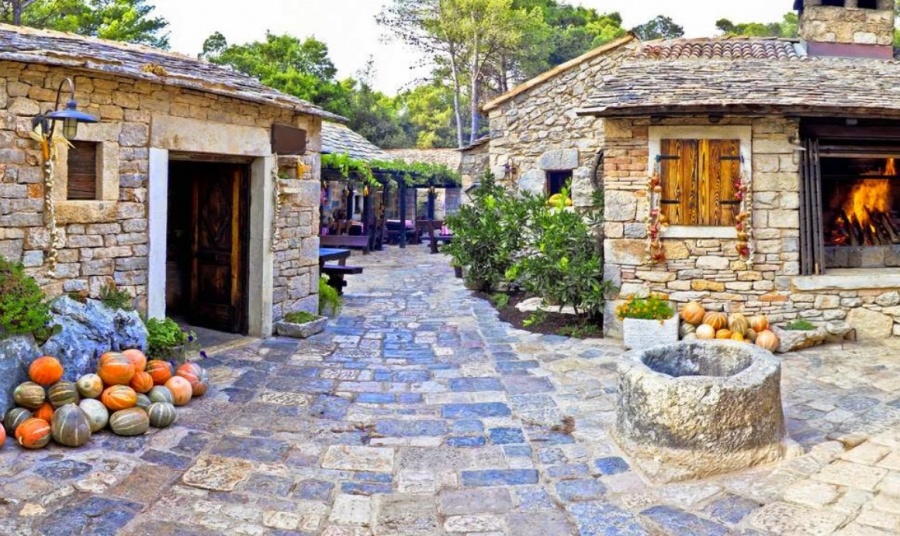
Aquarium Sibenik - If you are in Sibenik, and you are looking for a place to visit and enrich your day - be sure to visit the Sibenik aquarium. This place is especially appealing to children and young people, but the elderly have something to see. In addition to enjoying the variety of wildlife and wildlife, if you are interested, you can learn a lot of interesting things about the nature surrounding our city.
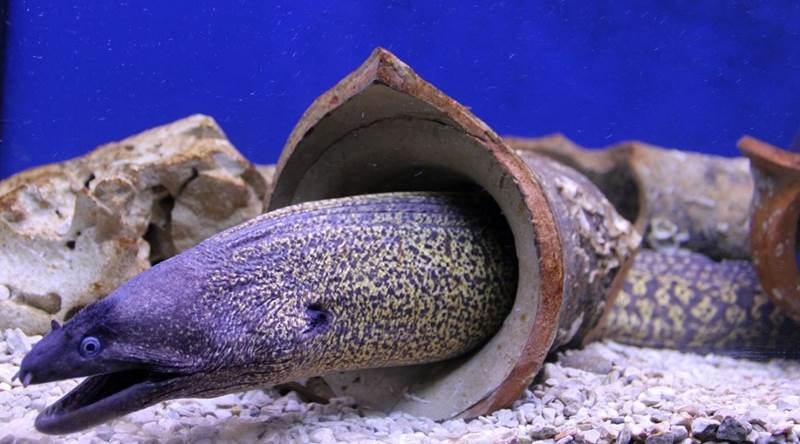
The Museum of the City of Sibenik - founded on December 20, 1925, when marking the millennial anniversary of the Croatian kingdom. It is located near the cathedral, in the former Knezevo palace. The prince's palace in its time was part of the coastal defense system of the city. It was built in the period from the 13th to the 14th centuries and today serves in a completely different way.
The Šibenik City Museum is a complex type museum. It consists of an archaeological, cultural-historical and ethnographic department. The museum deals with the collection, preservation, processing and presentations of the cultural and historical heritage of this region. In its collections, the Šibenik Museum preserves numerous objects of historical value, important for studying the Šibenik past, from the earliest times to the present day.
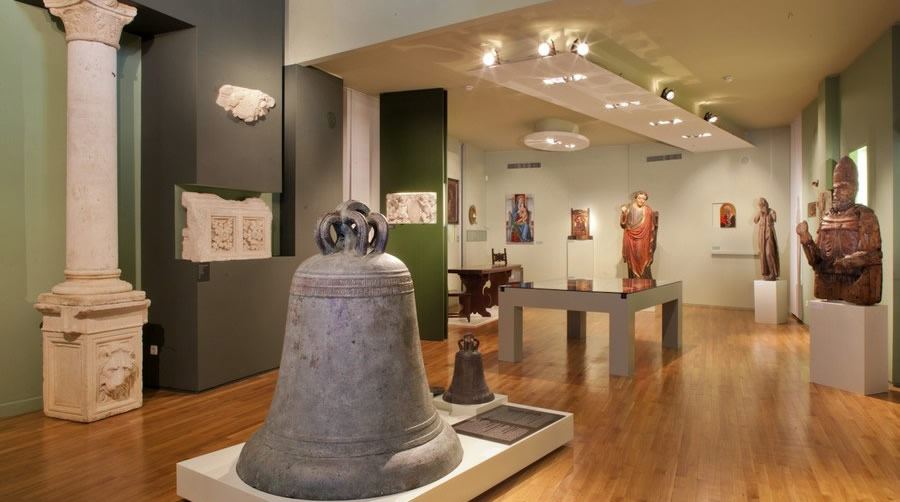
The fortress of St. Michael is still one of the many Sibenik buildings worth visiting. It is a historic monument and reminds us of the time the city passed. The fortress rises to the top of the old urban agglomeration, on a rocky hill 60 meters above sea level. Through his burning history he often changed his name. This fortress has a significant role and is a kind of epicenter of Sibenik. The oldest evidence of the existence of civilization in Šibenik area was found on this site.
Šubićevac Fort Šibenik is located a few hundred meters southeast of the St. Ivana. It is located at an altitude of 80 meters, on a hill called Vidakuša. The hill is called Vidakuša because on it, before the fort building, there was a small church of Sv. Vida. The church was built in 1646, at the same time as the fortress of St. Ivana, and with her played a significant role in defending the city from the Turks in 1647.
Fortress Sv. Nikole is located at the entrance to the Sv. Ante. It was built during the 16th century to protect the city from the Turkish attacks from the sea. Today it stands and shows the status of the city and its development in that period. It was designed by the Venetian military builder Michiela Sammichelle. The lower parts of the fortress are made of white stone, and the upper part of the brickwork. Sv. Nicholas belongs to the strongest maritime fortifications on the Croatian Adriatic coast. In addition, it is one of the most impressive buildings of this type in Europe, and would dare to write in the world as well.

Island of Krapanj - This interesting island is located near Šibenik, and you have the opportunity to visit the monastery museum and various diving skills from some of the ancient times. The island is also interesting because there is a place with the lowest altitude among the island settlements on the Adriatic. It is a village of Krapanj on the island of the same name, the highest altitude not exceeding 1.25 meters. In the sixties of the last century with more than 1,500 inhabitants it was the most populated island in the Adriatic.

Banj beach is the most popular beach in Sibenik, which is unique because it offers beautiful views of Šibenik as a whole. The beach is pebble and because the beach in the city itself is very rich in amenities, so there are no cafes, restaurants, sports and entertainment facilities.

Solaris Šibenik is a hotel tourist resort consisting of 5 large hotels and a large number of camping and bungalows, about 5 kilometers from the center of Sibenik. The resort is full of content for adults and children's attractions. Almost there is no content that a customer may wish to not offer in Solaris, from catering, entertainment, sports activities, and content to children.
Sv Nikola Beach - Pebble beach near the islet on which is the fortress of Sv. Nicholas that is under the protection of UNESCO. A wild beach with lots of shade of pine trees, lacking in catering facilities, the only thing you can buy for refreshment is ice cream. Nevertheless, a nice and quiet place for day outing on the beach, sunbathing, swimming and enjoying the beautiful view of the promenade stretching along the entire channel of St. Anthony and the escape from the summer crowds.
Beach in Biograd na Moru - Dražica is the main beach in Biograd on the sea near the beach of Soline, which continues on the beach Dražica. The beach is located on the south-eastern side of the city and begins with the hotels Ilirija and Adriatic. The beach is located along a pine forest all over its length so that the shade is secured with all visitors. There is a promenade along the beach, where there is plenty of content with a variety of offers, so there is almost nothing you can not find for longer these great promenades. There are bars, cafes, nightclubs, fast food restaurants, cocktail stalls, ice cream, souvenirs.
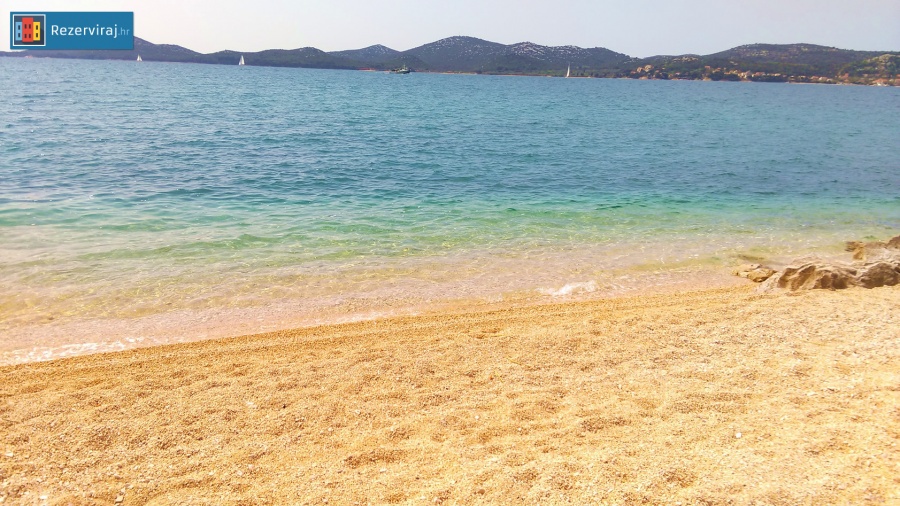
Soline beach continues on Dražice Beach. The beach is located on the south-eastern side of the city and is located in a pine forest so that it abounds in shade outside the central part of the sandy beach. The beach is a walkway from the center of the city, which is about a kilometer long and the promenade itself is full of amenities such as bars, cafes, nightclubs, fast food restaurants, booths, ice cream parlors, and souvenirs.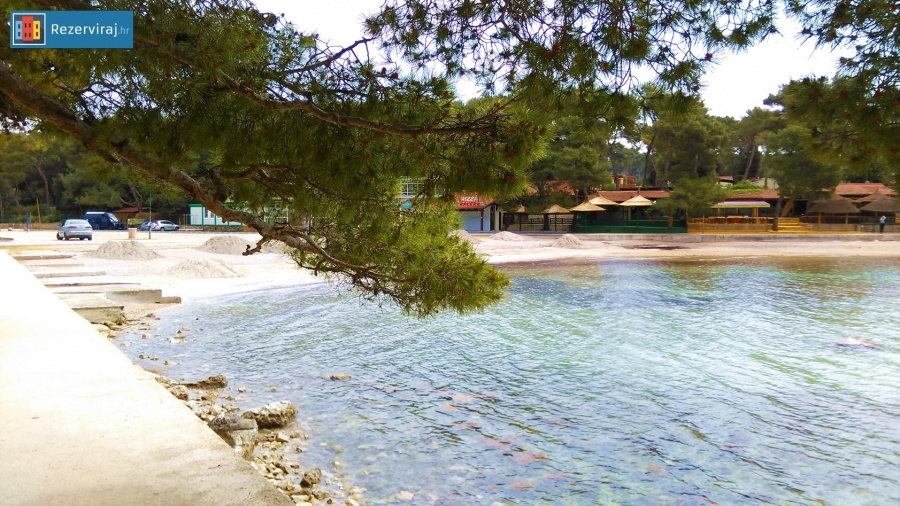
Beach Podvrák Murter One of the beaches on which the islanders can boast is the Podvrák Beach. Although the first seems that the locals of Murter hide this jewel and keep it for themselves, this is of course not true. All the guests are welcome, and the islanders are trying to show them their natural beauty in the best light. The beach is especially distinguished due to the white sand that gives the sea an azure and crystal clear color. The sea that plagues the beach is not profound, which means that the weaker swimmers will be able to fully enjoy themselves, as well as the parents who come with their little ones. If you are looking for a place for relaxation and calming effect, the Submarine is a beach for you.

Pine Pakoštane Beach is located near Pine Beach Pakostane Resort and is a favorite place for all guests of the resort as well as other guests as well as hosts for their beauty and diversity. The center of this beach is a small sandy bay that is completely natural and is a real attraction. Around the sandy bay there is mostly a rocky area, parts and pebbles, all together in a pine forest that goes all the way to the sea and provides shade for all guests
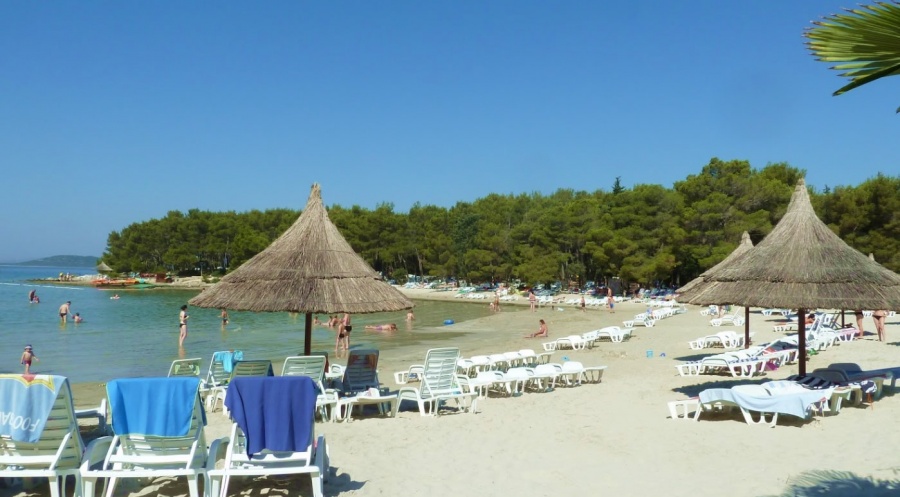
Slanica Beach is the main beach on the island of Murter. It is located on the south side of the island, near the Colentum hotel. It is a sandy beach, and many claim and the most beautiful beach in the area. Because of the shallow waters that plunge into the beach, it is suitable for children and people who are weaker or do not swim anyway. Also, the beach is a great choice for those who love sports activities in the water, so it will be good to play picigines, volleyball and similar activities that are specific to our sea.
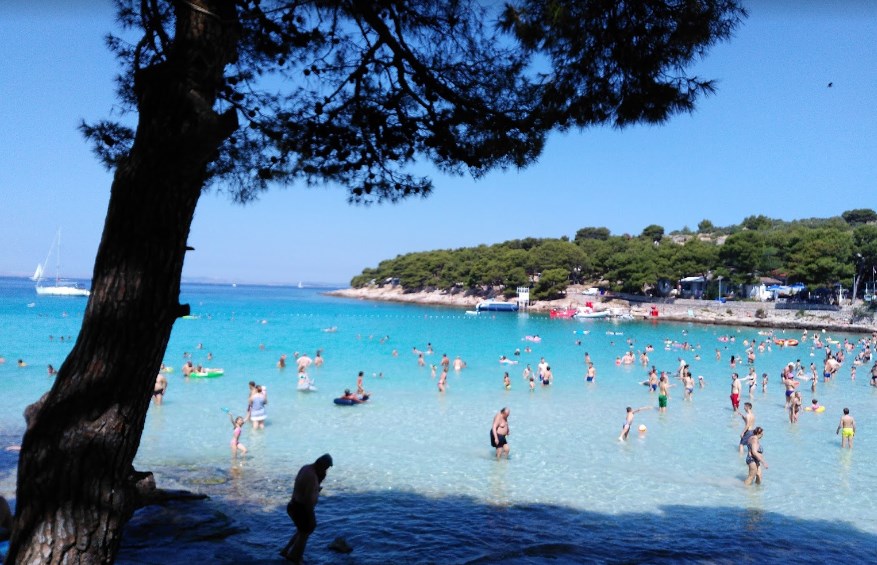
The Oasis of Peace beach is located in Drage near Biograd. The beach is mostly pebble and part of the beach is rocky and rocky. The beach is located next to the Oasis of Peace camp. The beach leads to the beach from the village itself and to the center is a 10 minute walk to the promenade. The beach is abundant with pine trees and the shade is secured for all guests.
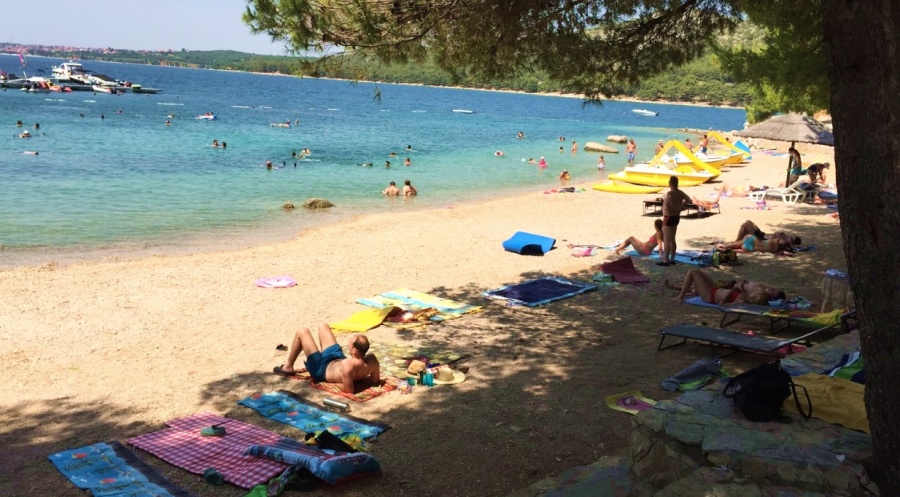
The Hangar Beach is located in Vodice, not far from the city center, in front of Hotel Olympia and not far from Imperial and Miramare hotels. The location of the hotels and not far from the center of Vodice suggests that the offer on the beach is rich so there is almost no content you can wish for if you can not find it near the beach. The lack of beach position is a big crowd in the summer months so the beach is hard to find a place for a towel. The beach is pebble with parts that are tiled. On the beach in the evening there are various entertainment and ater beach parties, so this beach is not only for swimming and sunbathing.
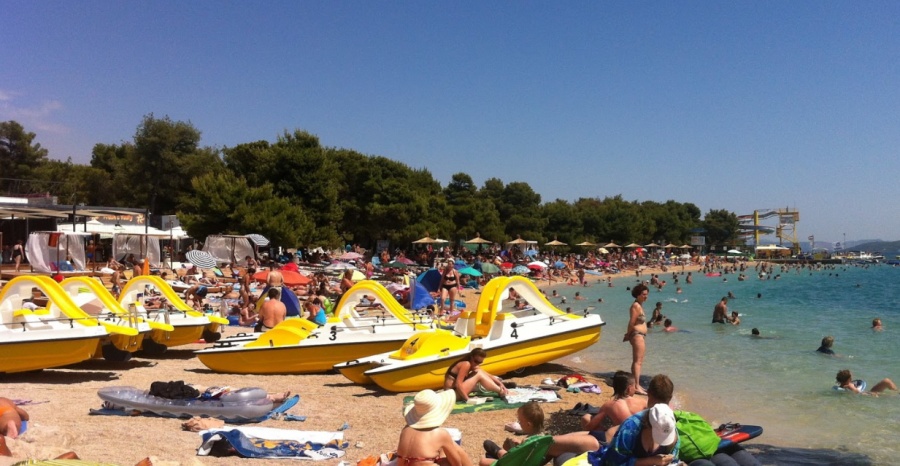
The Blue Beach Vodice is located at the exit from Vodice in the direction of Tribunj and is one of the main baths for the Guide and its guests. The beach abounds with entertainment and gastronomy. There are also cafes bars Beach Bar Bamboo, Tropicana Grill Blue Beach restaurants, TonIvan and various stalls with ice cream, fritules, palaces, drinks ... This beach has a well-groomed ramp for easier access for the disabled and the elderly to the sea. The base is pebble and at the entrance and the sea in some parts goes to the sandy and is ideal for young children and there are concrete hexagons that are suitable for jumping into the sea.
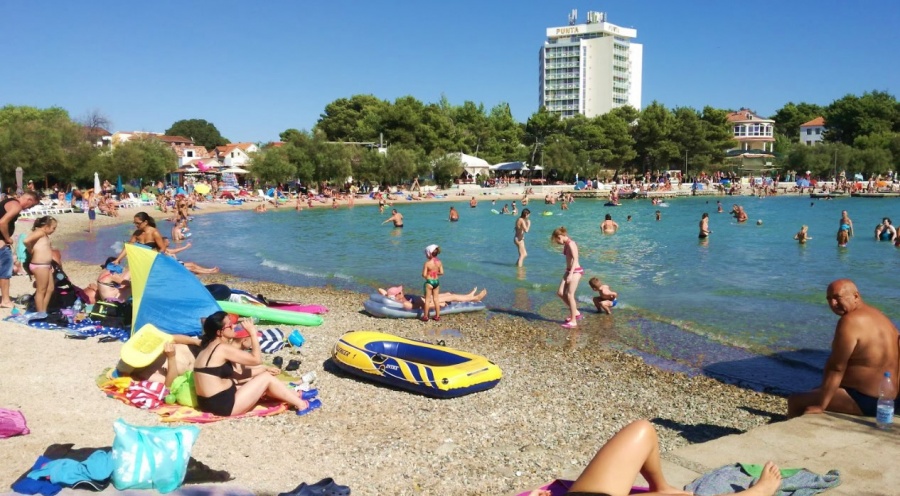
The town beach Primosten is located in the seaside bay, it is very spacious and well decorated. On the beach in Primošten you have showers, changing cabins and, during the season, a rescuer who is carefully monitored for the safety of the guests. Gravel is this beach, long enough to receive all the guests, and again to have places for new ones. Beside the beach there are private accommodation, hotels and shops. All you need is nearby. Close to the beach is Velika Rudača.
Krka National Park, famous for its magnificent waterfalls, is located near Skradin in the Šibenik-Knin County of Vodice, about 25 kilometers away. The second most visited national park in Croatia offers tourists numerous values, from highly preserved nature and beautiful landscapes to cultural sights and active holidays. The natural beauty of the park is most evident in the waterfalls of the river Krka, which have 7 and together form a natural karst phenomenon. You can experience the most beautiful natural "show" in the spring and summer, when the waterfalls are full of splendor, and the temperatures allow refreshing water, near the waterfalls.

Kornati National Park was proclaimed in 1980 when it was protected. The total surface of this park is about 220 square kilometers and is made up of larger and smaller islands, and rocks emerging from the blue sea of the Adriatic Sea. Of the total area of Kornati, only ¼ of the mainland is occupied. The rest of the National Park is the sea and the living world that lives there.
Although at first sight Kornati is a desert and very isolated place, this park abounds in natural and cultural riches. Also, the animal and plant world are still a specialty of the park. It has natural and cultural features. Particularly distinguished are the vertical cliffs, facing the open sea, the so-called crown. They are a kind of phenomenon of Kornati, and habitat are rare species of plants and animals. Beauties are most distinguished by the natural diversity and the mighty silhouette of this island. The cultural heritage will only add to the beauty of the Kornati, and give one special offer for those who want to visit the National Park. Kornati maps can be purchased at numerous tourist agencies in Vodice.

Paklenica National Park, about 70 kilometers from Vodice. Following its proclamation, the National Parack Paklenica is the second in Croatia. It has been proclaimed national park since 1949, or more precisely on 19 October 1949. Paklenica was proclaimed a park and a few months after the Plitvice Lakes National Park.
It is interesting to note that Paklenica was first proclaimed National Park in 1929, but according to the then laws, the proclamation should be reviewed every year - which has not been done, and for years Paklenica has been without the status of National Park.
On July 7, 2017, the Paklenica National Park was also included on the UNESCO World Heritage list in Europe, as part of the common world heritage of 13 countries called "Beech forests in the Carpathians and other areas of Europe". Certainly worth mentioning is the fact that the park abounds in plant species, among which the forest communities are particularly emphasized. The forests are made up of black pine (Pinus nigra), whose resin "Paklina" is Paklenica and its name.
Apart from the pines, the Paklenica forests are rich in beech (Fagus sylvatica), and there is also a birch curve here. Paklenica, by its surface, owns the largest preserved forest complex in Dalmatia. More than half the park is covered with vegetation, and the rest is karst relief.
Split Diocletian's Palace - If we mention Split in any context of history, culture or even today's look of this city, we can all agree that our thoughts will dominate Diocletian's palace. We do not need to be surprised, because Diocletian's palace is a kind of symbol of the city and is the first link to the beauties of Split and its historical and cultural riches.
Get to know the Diocletian's Palace a bit better, take a peek in some secrets and enjoy the beauty of the historical facts that tell us the details of the exterior walls and the interior.
Diocletian's Palace is an ancient palace of Diocletian's Emperor in Split. It was built around 300 years during the rule of the Roman Emperor Diocletian. Diocletian stayed in the palace after retirement from the throne (305) until his death (316).
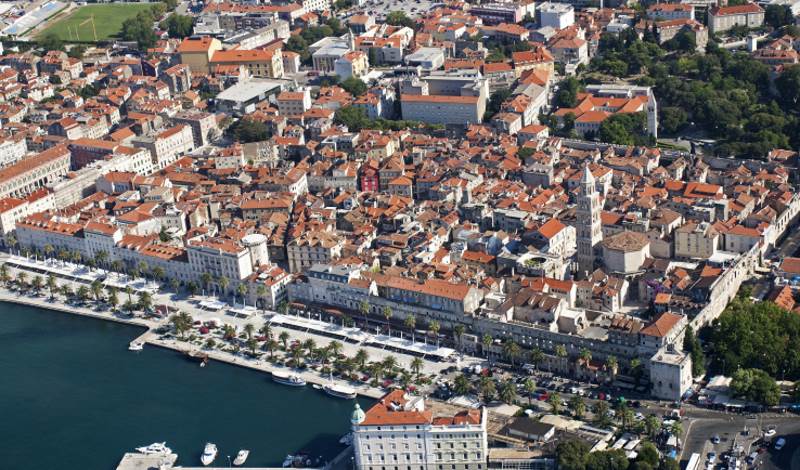
Hello Sun Zadar Greetings to the sun is the installation of architect Nikola Bašić, located in the Zadar harbor in the stone pavement of the city's waterfront.
Riva in Zadar has become a tourist attraction, and it is a favorite gathering place for many sojourners as well as guests coming to Zadar. The view from the shore will delight everything that passes, especially in the evening when the sun goes down, and light effects begin in the installation mentioned.
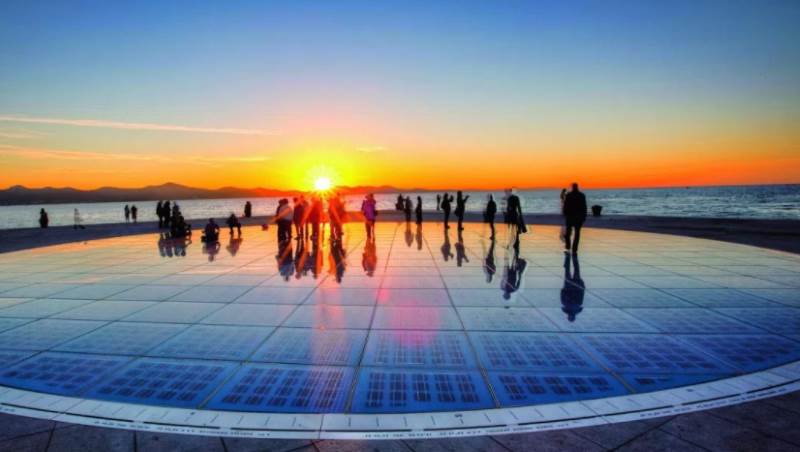
Church of Sv. Donata Zadar This Zadar church is also a trademark of the city, and belongs to the most famous and most important European pre-Romanesque churches.
Originally devoted to the Holy Trinity, and from the 15th century with its present name, named after the Zadar bishop Donat who initiated the construction. The church is of an unusual cylindrical shape with a double interior space, which is why it stands out with its originality and uniqueness. We did not link some models for the construction, and only some of them are connected with the baptistery of Charles the Great or with the Church of St. Vitalea in Ravenna. It is a pride and symbol of Zadar, with the remains of the Roman Forum in its foundations, grand in terms of its construction time. Today, the church is the venue for the Musical Evenings in Donat, due to its outstanding acoustic features and because of its long absence of sacred function.

Zadar Cathedral - Zadarska Cathedral of Sts Stošija or Anastasia is a three-nave Romanesque building. It is also the largest church in Dalmatia.
It was built on two occasions, in the 12th and 13th centuries, with the preserved old from the 9th and 11th centuries, which grew up in the place of an early Christian basilica. The beginnings of the Zadar cathedral building date back to far-reaching history, even in the 4th or 5th centuries.
Sarcophagus with the powers of St. Stošije was created by the Zadar bishop Donat. It is kept in the cathedral on the altar in the northern apse, or in the left lawn of the church. In November 1202, the city of Zadar, after the siege, conquered and devastated the Venetians with the help of Knights IV. a crusade military when the cathedral was severely damaged. The reconstruction of the cathedral lasted throughout the 13th century, and when its restoration was completed, it was dedicated again to it on May 27, 1285 by Archbishop Lovro Periandar.


For the first time, Sibenik was mentioned in 1066 in the gift of Petra Krešimira IV. That is why it is often called the Krešimirov town. It is interesting to note that Sibenik, the epidemic of the plague in the mid-17th century, was the largest city on the entire eastern Adriatic coast. It was the de facto capital of Croatia from December 1944 to May 1945.
Sibenik Surroundings - what to visit

Sibenik Cathedral - This building is interesting and striking, both in Croatia and in the world. Many dive into this facility, looking at it with the eyes of experts or a visitor who loves history and old building. The Cathedral in Sibenik is certainly the most important architectural achievement from the 15th to the 16th century on the Croatian soil. It is special for many things, and today it is a symbol of this city. The cathedral was completed in 1536, and in 1555 it was bishop Ivan Lucija Štafilić. After a thorough reconstruction in the 19th century the cathedral was re-dedicated in 1860.
Due to its exceptional values, the Cathedral of Sibenik was listed on UNESCO World Heritage List in 2000. The Cathedral was built on the south side of the central old town square, on the site of the Romanesque church of St. James. Construction did not end soon, even more - it lasted for over 100 years.

Dalmatian ethno village is a unique attraction of Croatian tourist offer. This beautiful ambience is just a few steps from the sea in the tourist resort Solaris in Sibenik, and there are various events and events held there.
Here you can experience Dalmatia and Dalmatian customs from some of the earlier times. If you want to see how the houses once looked, how they were built and how they were decorated inside, visit the ethno village and find out all about it.

Aquarium Sibenik - If you are in Sibenik, and you are looking for a place to visit and enrich your day - be sure to visit the Sibenik aquarium. This place is especially appealing to children and young people, but the elderly have something to see. In addition to enjoying the variety of wildlife and wildlife, if you are interested, you can learn a lot of interesting things about the nature surrounding our city.

The Museum of the City of Sibenik - founded on December 20, 1925, when marking the millennial anniversary of the Croatian kingdom. It is located near the cathedral, in the former Knezevo palace. The prince's palace in its time was part of the coastal defense system of the city. It was built in the period from the 13th to the 14th centuries and today serves in a completely different way.
The Šibenik City Museum is a complex type museum. It consists of an archaeological, cultural-historical and ethnographic department. The museum deals with the collection, preservation, processing and presentations of the cultural and historical heritage of this region. In its collections, the Šibenik Museum preserves numerous objects of historical value, important for studying the Šibenik past, from the earliest times to the present day.

The fortress of St. Michael is still one of the many Sibenik buildings worth visiting. It is a historic monument and reminds us of the time the city passed. The fortress rises to the top of the old urban agglomeration, on a rocky hill 60 meters above sea level. Through his burning history he often changed his name. This fortress has a significant role and is a kind of epicenter of Sibenik. The oldest evidence of the existence of civilization in Šibenik area was found on this site.
Šubićevac Fort Šibenik is located a few hundred meters southeast of the St. Ivana. It is located at an altitude of 80 meters, on a hill called Vidakuša. The hill is called Vidakuša because on it, before the fort building, there was a small church of Sv. Vida. The church was built in 1646, at the same time as the fortress of St. Ivana, and with her played a significant role in defending the city from the Turks in 1647.
Fortress Sv. Nikole is located at the entrance to the Sv. Ante. It was built during the 16th century to protect the city from the Turkish attacks from the sea. Today it stands and shows the status of the city and its development in that period. It was designed by the Venetian military builder Michiela Sammichelle. The lower parts of the fortress are made of white stone, and the upper part of the brickwork. Sv. Nicholas belongs to the strongest maritime fortifications on the Croatian Adriatic coast. In addition, it is one of the most impressive buildings of this type in Europe, and would dare to write in the world as well.

Island of Krapanj - This interesting island is located near Šibenik, and you have the opportunity to visit the monastery museum and various diving skills from some of the ancient times. The island is also interesting because there is a place with the lowest altitude among the island settlements on the Adriatic. It is a village of Krapanj on the island of the same name, the highest altitude not exceeding 1.25 meters. In the sixties of the last century with more than 1,500 inhabitants it was the most populated island in the Adriatic.

Beaches in Šibenik
Banj beach is the most popular beach in Sibenik, which is unique because it offers beautiful views of Šibenik as a whole. The beach is pebble and because the beach in the city itself is very rich in amenities, so there are no cafes, restaurants, sports and entertainment facilities.

Solaris Šibenik is a hotel tourist resort consisting of 5 large hotels and a large number of camping and bungalows, about 5 kilometers from the center of Sibenik. The resort is full of content for adults and children's attractions. Almost there is no content that a customer may wish to not offer in Solaris, from catering, entertainment, sports activities, and content to children.
Sv Nikola Beach - Pebble beach near the islet on which is the fortress of Sv. Nicholas that is under the protection of UNESCO. A wild beach with lots of shade of pine trees, lacking in catering facilities, the only thing you can buy for refreshment is ice cream. Nevertheless, a nice and quiet place for day outing on the beach, sunbathing, swimming and enjoying the beautiful view of the promenade stretching along the entire channel of St. Anthony and the escape from the summer crowds.
Beaches in the vicinity of Šibenik
Beach in Biograd na Moru - Dražica is the main beach in Biograd on the sea near the beach of Soline, which continues on the beach Dražica. The beach is located on the south-eastern side of the city and begins with the hotels Ilirija and Adriatic. The beach is located along a pine forest all over its length so that the shade is secured with all visitors. There is a promenade along the beach, where there is plenty of content with a variety of offers, so there is almost nothing you can not find for longer these great promenades. There are bars, cafes, nightclubs, fast food restaurants, cocktail stalls, ice cream, souvenirs.

Soline beach continues on Dražice Beach. The beach is located on the south-eastern side of the city and is located in a pine forest so that it abounds in shade outside the central part of the sandy beach. The beach is a walkway from the center of the city, which is about a kilometer long and the promenade itself is full of amenities such as bars, cafes, nightclubs, fast food restaurants, booths, ice cream parlors, and souvenirs.

Beach Podvrák Murter One of the beaches on which the islanders can boast is the Podvrák Beach. Although the first seems that the locals of Murter hide this jewel and keep it for themselves, this is of course not true. All the guests are welcome, and the islanders are trying to show them their natural beauty in the best light. The beach is especially distinguished due to the white sand that gives the sea an azure and crystal clear color. The sea that plagues the beach is not profound, which means that the weaker swimmers will be able to fully enjoy themselves, as well as the parents who come with their little ones. If you are looking for a place for relaxation and calming effect, the Submarine is a beach for you.

Pine Pakoštane Beach is located near Pine Beach Pakostane Resort and is a favorite place for all guests of the resort as well as other guests as well as hosts for their beauty and diversity. The center of this beach is a small sandy bay that is completely natural and is a real attraction. Around the sandy bay there is mostly a rocky area, parts and pebbles, all together in a pine forest that goes all the way to the sea and provides shade for all guests

Slanica Beach is the main beach on the island of Murter. It is located on the south side of the island, near the Colentum hotel. It is a sandy beach, and many claim and the most beautiful beach in the area. Because of the shallow waters that plunge into the beach, it is suitable for children and people who are weaker or do not swim anyway. Also, the beach is a great choice for those who love sports activities in the water, so it will be good to play picigines, volleyball and similar activities that are specific to our sea.

The Oasis of Peace beach is located in Drage near Biograd. The beach is mostly pebble and part of the beach is rocky and rocky. The beach is located next to the Oasis of Peace camp. The beach leads to the beach from the village itself and to the center is a 10 minute walk to the promenade. The beach is abundant with pine trees and the shade is secured for all guests.

The Hangar Beach is located in Vodice, not far from the city center, in front of Hotel Olympia and not far from Imperial and Miramare hotels. The location of the hotels and not far from the center of Vodice suggests that the offer on the beach is rich so there is almost no content you can wish for if you can not find it near the beach. The lack of beach position is a big crowd in the summer months so the beach is hard to find a place for a towel. The beach is pebble with parts that are tiled. On the beach in the evening there are various entertainment and ater beach parties, so this beach is not only for swimming and sunbathing.

The Blue Beach Vodice is located at the exit from Vodice in the direction of Tribunj and is one of the main baths for the Guide and its guests. The beach abounds with entertainment and gastronomy. There are also cafes bars Beach Bar Bamboo, Tropicana Grill Blue Beach restaurants, TonIvan and various stalls with ice cream, fritules, palaces, drinks ... This beach has a well-groomed ramp for easier access for the disabled and the elderly to the sea. The base is pebble and at the entrance and the sea in some parts goes to the sandy and is ideal for young children and there are concrete hexagons that are suitable for jumping into the sea.

The town beach Primosten is located in the seaside bay, it is very spacious and well decorated. On the beach in Primošten you have showers, changing cabins and, during the season, a rescuer who is carefully monitored for the safety of the guests. Gravel is this beach, long enough to receive all the guests, and again to have places for new ones. Beside the beach there are private accommodation, hotels and shops. All you need is nearby. Close to the beach is Velika Rudača.
What to see around the Šibenik area
Krka National Park, famous for its magnificent waterfalls, is located near Skradin in the Šibenik-Knin County of Vodice, about 25 kilometers away. The second most visited national park in Croatia offers tourists numerous values, from highly preserved nature and beautiful landscapes to cultural sights and active holidays. The natural beauty of the park is most evident in the waterfalls of the river Krka, which have 7 and together form a natural karst phenomenon. You can experience the most beautiful natural "show" in the spring and summer, when the waterfalls are full of splendor, and the temperatures allow refreshing water, near the waterfalls.

Kornati National Park was proclaimed in 1980 when it was protected. The total surface of this park is about 220 square kilometers and is made up of larger and smaller islands, and rocks emerging from the blue sea of the Adriatic Sea. Of the total area of Kornati, only ¼ of the mainland is occupied. The rest of the National Park is the sea and the living world that lives there.
Although at first sight Kornati is a desert and very isolated place, this park abounds in natural and cultural riches. Also, the animal and plant world are still a specialty of the park. It has natural and cultural features. Particularly distinguished are the vertical cliffs, facing the open sea, the so-called crown. They are a kind of phenomenon of Kornati, and habitat are rare species of plants and animals. Beauties are most distinguished by the natural diversity and the mighty silhouette of this island. The cultural heritage will only add to the beauty of the Kornati, and give one special offer for those who want to visit the National Park. Kornati maps can be purchased at numerous tourist agencies in Vodice.

Paklenica National Park, about 70 kilometers from Vodice. Following its proclamation, the National Parack Paklenica is the second in Croatia. It has been proclaimed national park since 1949, or more precisely on 19 October 1949. Paklenica was proclaimed a park and a few months after the Plitvice Lakes National Park.
It is interesting to note that Paklenica was first proclaimed National Park in 1929, but according to the then laws, the proclamation should be reviewed every year - which has not been done, and for years Paklenica has been without the status of National Park.
On July 7, 2017, the Paklenica National Park was also included on the UNESCO World Heritage list in Europe, as part of the common world heritage of 13 countries called "Beech forests in the Carpathians and other areas of Europe". Certainly worth mentioning is the fact that the park abounds in plant species, among which the forest communities are particularly emphasized. The forests are made up of black pine (Pinus nigra), whose resin "Paklina" is Paklenica and its name.
Apart from the pines, the Paklenica forests are rich in beech (Fagus sylvatica), and there is also a birch curve here. Paklenica, by its surface, owns the largest preserved forest complex in Dalmatia. More than half the park is covered with vegetation, and the rest is karst relief.
Surroundings Biograd at sea towns
Split Diocletian's Palace - If we mention Split in any context of history, culture or even today's look of this city, we can all agree that our thoughts will dominate Diocletian's palace. We do not need to be surprised, because Diocletian's palace is a kind of symbol of the city and is the first link to the beauties of Split and its historical and cultural riches.
Get to know the Diocletian's Palace a bit better, take a peek in some secrets and enjoy the beauty of the historical facts that tell us the details of the exterior walls and the interior.
Diocletian's Palace is an ancient palace of Diocletian's Emperor in Split. It was built around 300 years during the rule of the Roman Emperor Diocletian. Diocletian stayed in the palace after retirement from the throne (305) until his death (316).

Hello Sun Zadar Greetings to the sun is the installation of architect Nikola Bašić, located in the Zadar harbor in the stone pavement of the city's waterfront.
Riva in Zadar has become a tourist attraction, and it is a favorite gathering place for many sojourners as well as guests coming to Zadar. The view from the shore will delight everything that passes, especially in the evening when the sun goes down, and light effects begin in the installation mentioned.

Church of Sv. Donata Zadar This Zadar church is also a trademark of the city, and belongs to the most famous and most important European pre-Romanesque churches.
Originally devoted to the Holy Trinity, and from the 15th century with its present name, named after the Zadar bishop Donat who initiated the construction. The church is of an unusual cylindrical shape with a double interior space, which is why it stands out with its originality and uniqueness. We did not link some models for the construction, and only some of them are connected with the baptistery of Charles the Great or with the Church of St. Vitalea in Ravenna. It is a pride and symbol of Zadar, with the remains of the Roman Forum in its foundations, grand in terms of its construction time. Today, the church is the venue for the Musical Evenings in Donat, due to its outstanding acoustic features and because of its long absence of sacred function.

Zadar Cathedral - Zadarska Cathedral of Sts Stošija or Anastasia is a three-nave Romanesque building. It is also the largest church in Dalmatia.
It was built on two occasions, in the 12th and 13th centuries, with the preserved old from the 9th and 11th centuries, which grew up in the place of an early Christian basilica. The beginnings of the Zadar cathedral building date back to far-reaching history, even in the 4th or 5th centuries.
Sarcophagus with the powers of St. Stošije was created by the Zadar bishop Donat. It is kept in the cathedral on the altar in the northern apse, or in the left lawn of the church. In November 1202, the city of Zadar, after the siege, conquered and devastated the Venetians with the help of Knights IV. a crusade military when the cathedral was severely damaged. The reconstruction of the cathedral lasted throughout the 13th century, and when its restoration was completed, it was dedicated again to it on May 27, 1285 by Archbishop Lovro Periandar.

Privatni smještaj direktno od vlasnika na www.SMJESTAJ.com.hr/trazi

Prati nas na facebooku za više članaka o Hrvatskoj. Podijeli ovaj članak klikom na gumbe desno. Hvala
Upgrade this article
Bio si na ovom mjestu? Podijeli s nama svoja iskustva ili fotografije.
Napiši svoju verziju članka. Nagrađujemo vlasnike apartmana.













